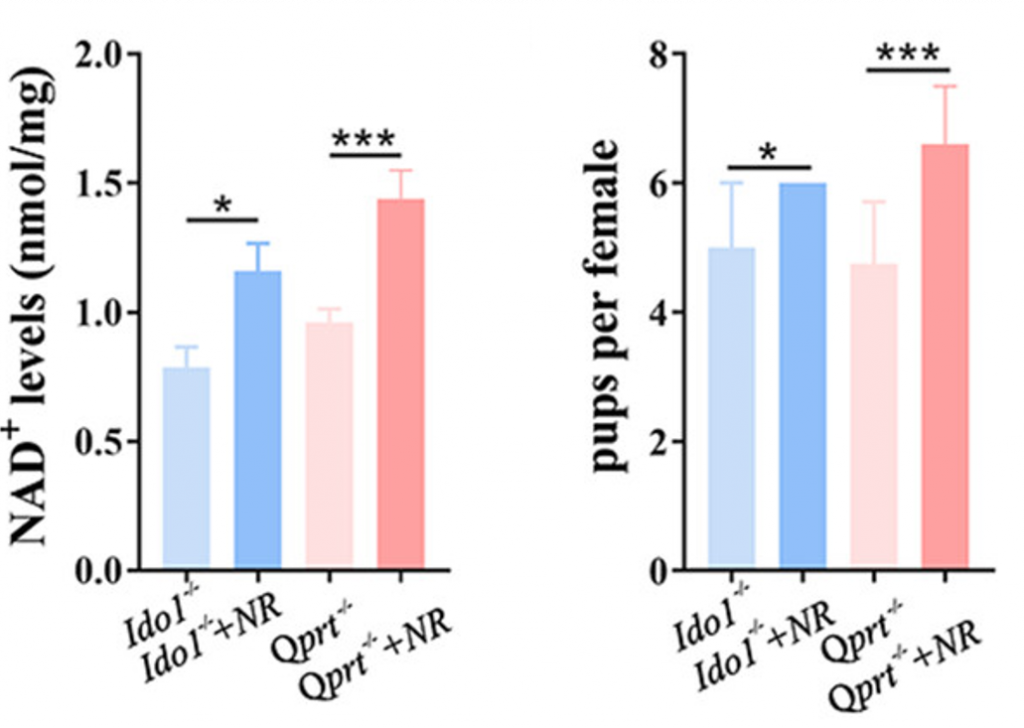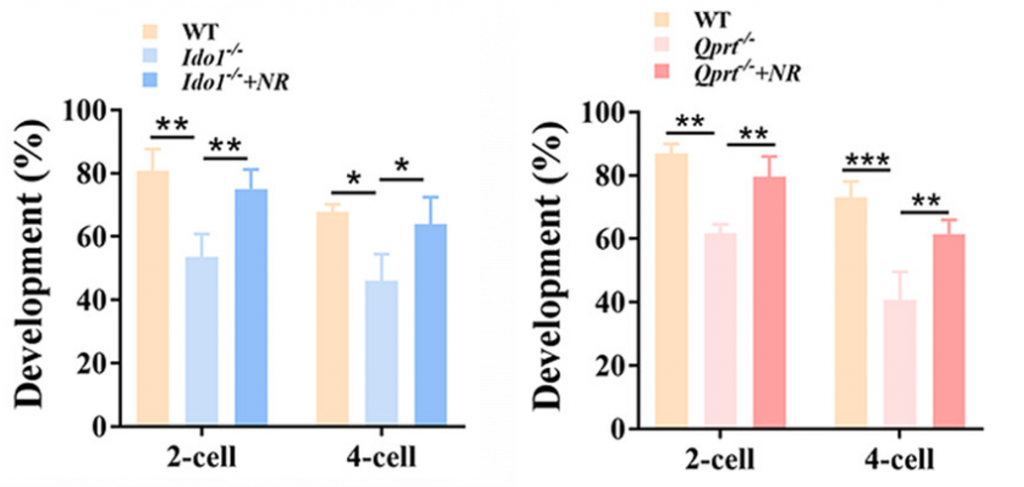Key Points:
- Supplementation with NR increases live birth rates and elevates NAD+ levels in the ovaries.
- NR counters mitochondrial dysfunction and reduces oxidative stress — a hallmark of aging that causes damage to cells.
- Early embryo development is enhanced by NR, as measured by the number of 2-celled and 4-celled embryos grown upon fertilization.
Surmounting evidence indicates that restoring cellular NAD+ levels in old age can potentially treat several chronic diseases. While a given chronic disease is consequent of billions of dysfunctional cells, infertility can begin with the aberrant division of a single cell — the oocyte. Furthermore, faithful cellular division depends largely on sufficient energy supplied by mitochondria, which NAD+ is known to enhance in cases of metabolic depletion.
Now, researchers from The First Affiliated Hospital of Zhengzhou University in China have found that restoring NAD+ levels in middle-aged mice promotes fertility, likely by enhancing mitochondrial efficiency. As reported in Aging Cell, Yang and colleagues show that treating NAD+-deficient mice with NR elevates ovarian NAD+ levels and increases litter size. They also show that NR reduces mitochondrial oxidative stress and enhances embryonic development.
Boosting NAD+ Promotes Female Fertility
To exaggerate the effects of aging on ovarian NAD+ levels, Yang and colleagues utilized CRISPR/Cas9 technology to delete key enzymes necessary for the synthesis of NAD+ from scratch (de novo). They found that deleting these enzymes, called Idol1 and Qprt, led to a reduction in NAD+ in the ovaries of middle-aged (8- and 12-months-old) but not young (3-months-old) female mice, demonstrating an age-related reduction in ovary NAD+ levels.
To determine the effects of increasing ovarian NAD+ levels, the researchers supplemented the NAD+-deficient mice with 400 mg/kg /day of NR for 7 months beginning at 4-weeks-old. This prompted an increase in ovarian NAD+ levels as expected. Furthermore, the average litter size of the NAD+-deficient mice increased after NR supplementation, indicating that NR can at least partially restore fertility.

To function and survive, our cells rely on mitochondria, our primary cellular energy producers. However, mitochondrial efficiency tends to wane with age resulting in excess reactive oxygen species (ROS). It is the accumulation of ROS that causes damage to cells in what is called oxidative stress. Oxidative stress is harmful to all cells, including oocytes, and it contributes to the dysfunction of meiosis, a form of cellular division critical for oocyte maturation. Yang and colleagues found that NAD+-deficient mice supplemented with NR had reduced mitochondrial ROS levels, suggesting that NR quenches oocyte oxidative stress.

To explore the potential of fertilized oocytes to grow into full-fledged mice, Yang and colleagues fertilized NAD+-deficient mouse oocytes with male mouse spermatozoa in a dish (in vitro fertilization). They then measured the rates of 2-celled and 4-celled embryos, an indicator of embryonic development progression. The results showed that NR supplementation increased the percentage of 4-celled embryos observed in the NAD+-deficient mice, suggesting that NR increases embryonic development potential.

Can NAD+ Boosters Widen the Reproductive Window for Women?
Overall, the findings of Yang and colleagues suggest that NR can counter ovarian aging and promote fertility by rejuvenating mitochondria. Due to ovarian aging, female fertility begins to decline around the age of 32 and then rapidly declines after the age of 40. Now it seems possible that NR could delay this decline, potentially increasing reproductive lifespan beyond the age of 40. However, this has not been tested in humans.
A previous study showed that nicotinic acid, an NAD+ booster like NR, improves oocyte quality in obese mice. Also in obese mice, NR was shown to promote fertility by increasing litter size. Furthermore, the NAD+ booster NMN has been shown to have anti-aging effects on mouse ovaries and increase litter size. These studies support the notion that boosting NAD+ can potentially promote fertility in humans by delaying ovarian aging and widening the reproductive window.